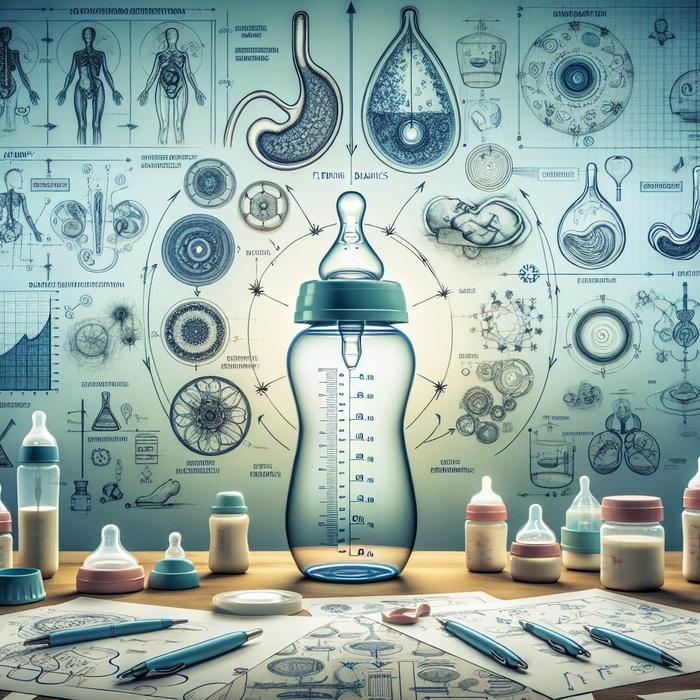Understanding the Importance of Scientifically-Recommended Baby Bottles
When it comes to the health and nutrition of your little one, there’s no room for compromise. As parents, we’re constantly seeking the best feeding solutions for our babies. This includes not just the quality of the formula or breast milk but also the type of bottle we use. The recent rise in scientific baby bottles is a testament to the growing awareness about the crucial role they play in infant health.
Why Opt for Scientific Baby Bottles?
There’s an increasing body of research suggesting that the choice of baby bottle can significantly affect a child’s development. The design, material, flow rate, and nipple type all have a role to play. Scientific baby bottles are designed to mimic the natural breastfeeding process, which not only makes for smoother feeding but also fosters healthy development.
Here are a few reasons why choosing the right baby bottle is vital:
- Aids Digestion: Research-based feeding solutions can reduce the amount of air a baby ingests while feeding, helping to alleviate digestive discomfort, gas, and colic.
- Promotes Oral Development: The right baby bottle can support healthy oral development by promoting natural tongue movement and exercising facial muscles.
- Encourages Natural Latch: Bottles designed to mimic breastfeeding encourage a natural latch, making the transition between breast and bottle smoother.
Finding the Best Feeding Solutions: A Scientific Approach
When it comes to finding the best feeding solution, be prepared to do some research. It’s essential to consider the age and unique needs of your baby. For instance, babies with specific health conditions or preemies might require a different type of bottle than full-term babies.
Some key factors to consider while choosing a baby bottle include:
- Bottle Material: The material, whether glass, plastic, or silicone, can have an impact on the bottle’s durability, longevity, and health implications. Each has its pros and cons, and the choice often comes down to personal preference and lifestyle.
- Nipple Design: The design of the nipple should closely mimic a mother’s breast to encourage a natural latch. Multiple flow rates can accommodate your growing baby’s needs.
- Ease of Cleaning: Baby bottles should be easy to dismantle and clean to ensure they are safe and hygienic for each use.
Bringing Science to Everyday Parenting
Being a parent involves making several crucial decisions daily, each influencing your child’s development. By choosing research-based feeding tools, you’re ensuring that your child’s health and development are in line with scientific recommendations.
A Community to Rely On
Parenting is not a solitary journey, and you’re not alone in seeking the best for your little one. Many online platforms and communities, like the New Parents subreddit, offer a wealth of information and experiences from other parents.
Remember, choosing a baby bottle is but one element of a broader picture that includes your child’s overall feeding habits, nutritional intake, and growth. Always consult with your pediatrician or a lactation consultant when in doubt.
The Crucial Role of Bottle Feeding in Overall Nutrition and Growth
While breastfeeding is known for its numerous benefits, bottle-feeding entails convenience and flexibility. However, it’s important to remember that the optimal use of baby bottles can depend on how precisely it replicates the mechanics of breastfeeding.
Bottles that are ergonomically designed stimulate the same jaw and tongue movements as breastfeeding. This is critical in providing similar benefits attributed to breastfeeding such as promoting oral health, aiding in digestion, and fostering secure attachment. Besides, using the right baby bottle, formula-fed babies can enjoy similar health advantages as breastfed babies. The CDC offers a host of valuable advice on the appropriate bottle-feeding practices.
Selecting the Right Baby Bottle: Leveraging Scientific Research
A comprehensive understanding of the latest research in developmental science is key while selecting a baby bottle. It’s essential to consider the various factors affecting your child’s development, including infancy sleep patterns, developmental psychology, and early childhood nutrition.
As suggested by developmental science, bottle-feeding plays a significant role in forming a secure attachment with your baby, thereby contributing positively to their emotional and psychological health.
Handling Early Morning Waking: A Well-Designed Bottle Can Help
Among the common challenges faced by parents is dealing with early morning waking, particularly for bottle-fed babies. A proper feeding system can bring vast improvements in the baby’s sleeping patterns. One useful technique is to use a slow-flow bottle at night. This encourages the baby to take longer to feed, leading to prolonged satiation and less likelihood of them waking up early. Here’s a useful discussion thread on handling early morning wakes.
Independent Analysis: Reviewing the Best Bottles
Navigating the market of baby products can be overwhelming, given the vastness of options available. Fortunately, many reliable sources provide unbiased reviews and ratings for baby bottles based on independent testing. Sources such as Wirecutter offer a scrutinized list of top-notch bottles based on overall performance, build quality, ease of use, and price.
The Bottom Line
The journey of parenthood encompasses a myriad of choices each day. Each decision you make can significantly shape your baby’s development, health, and well-being. Embracing a scientific approach in choosing a baby bottle is one of the most astute decisions you can make, ensuring you adhere to the highest standards of feeding solutions recommended by researchers and specialists worldwide.

